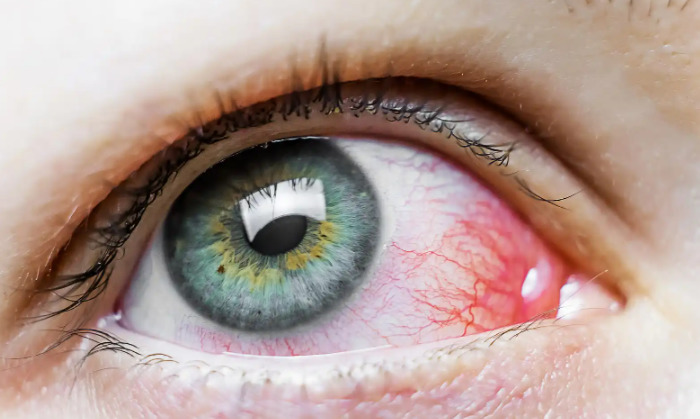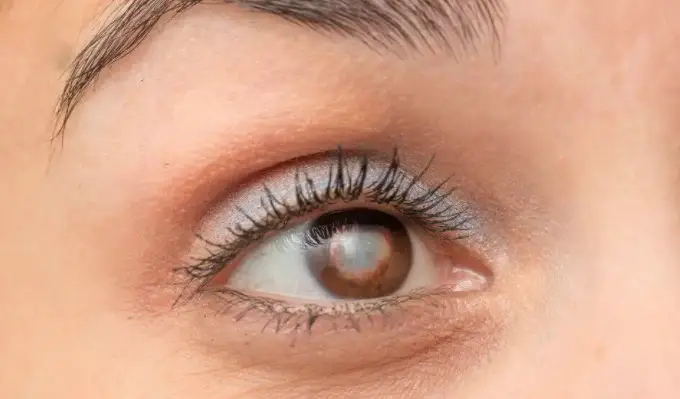The traditional use of eyebright is to treat mild eye problems. Find out what science says about it, as well as if it can benefit other parts of the body.

Eyebright is an annual plant that is 5 to 25 centimeters tall. Native to Europe, Asia, and North America, it has oval-shaped serrated leaves and white flowers with purple stripes and yellow spots in the center.
For centuries, traditional medicine has used eyebright for the relief of various mild eye conditions such as redness and irritation. Similarly, it could promote skin health and lower blood sugar levels. We show you in detail everything you need to know.
Eyebright Uses and Benefits

One of the common uses for eyebright is the relief of red eyes and other eye conditions.
In Greek, Euphrasia means “joy” and refers to what people feel when this herb relieves the discomfort that they suffer in the eyes. Discover other possible benefits below.
It is a source of plant compounds
Eyebright is rich in plant compounds like luteolin and quercetin. According to a study published in the Central European Journal of Immunology, these flavonoids can inhibit mast cells, that is, immune cells capable of releasing histamine, a compound that causes allergy symptoms such as runny nose and watery eyes.
Now eyebright is believed to have been traditionally used in the treatment of allergic rhinitis, also known as hay fever, due to these antihistamine properties. However, more research is still needed.
On the other hand, there is scientific evidence that eyebright contains aucubin, a chemical compound that is part of the iridoid group and stands out for its health effects.
According to a test-tube study, aucubin can reduce scarring caused by a heart attack. This is essential, as they affect the pumping ability of the heart.
Also, research in rodents found that this compound minimizes scarring of heart tissue after a heart attack, which is due to a reduction in oxidative damage caused by free radicals. However, more studies are still required.
May relieve mild eye problems
Eyebright’s name refers to its benefits for eye health and, despite being one of the most studied, the evidence is still limited. Find out below.
Research published in the Balkan Medical Journal showed that eyebright extract can help control inflammation in corneal cells.
Similarly, a test-tube study found that eye drops with eyebright and chamomile helped protect corneal cells from inflammation and sun damage.
Finally, a clinical trial in 65 adults with eye inflammation related to allergy to pollen, wind, dust, infections, and eye fatigue found that using eye drops containing eyebright and rose extracts completely relieved redness, swelling, burning, and sticky discharge from the eyes in about 81% of the participants.
It was also evidenced that the other participants experienced notable improvements. However, human research is needed to certify the efficacy of eyebright in treating eye irritation and inflammation.
Similarly, there are no studies to support whether it can alleviate the symptoms of eye diseases such as macular degeneration, cataracts, and glaucoma.
Other benefits of eyebright
In addition to improving eye health, eyebright may benefit other parts of the body. These are some of its most widespread common uses:
It would promote skin health. According to a study published in the International Journal of Molecular Sciences, eyebright can prevent sun damage to the skin by fighting so-called free radicals. It should be noted that this damage promotes the appearance of wrinkles and increases the risk of developing skin cancer.
It would lower blood sugar levels. Research published in Phytotherapy suggested that giving an oral extract of eyebright leaves to rodents with diabetes lowered their blood sugar levels by 34% in 2 hours. On the other hand, the extract did not affect glucose levels in rodents without diabetes.
It would fight harmful bacteria. A laboratory study found that plant compounds in eyebright can inhibit the growth of bacteria associated with eye infections, such as Staphylococcus aureus and Klebsiella pneumoniae.
It would protect the health of the liver. According to animal and test tube research, the aucubin present in eyebright would protect the liver from damage caused by free radicals.
It would decrease colds and coughs. Eyebright has traditionally been used to relieve colds, coughs, and sinusitis.
What presentations is it in?
Eyebright can be found in various forms, either as herbal tea, liquid extract, homeopathic granules, capsules, and eye drops.
Possible side effects

People with diabetes should check with their doctor before using eyebright.
Care must be taken in the way eyebright is used to alleviate vision conditions. Despite the popularity of homemade eye washes for relieving eye fatigue, they are not safe. On the contrary, they could cause an infection.
In that regard, sterile eye drops are recommended. However, if you have undergone eye surgery or wear contact lenses, you should consult with your ophthalmologist before applying the drops.
You should also check with your doctor if you take diabetes medications. This is because some studies suggest that eyebright can lower blood sugar levels.
Since it has also not been tested in pregnant or lactating women, they should avoid it. Lastly, keep in mind that eyebright is not a certified treatment for any condition or disease, so it should not be a substitute for any prescription medication.
Dosage and recommendations
While there is no set dosage, some products handle amounts depending on the presentation. These are some of them:
Tea: 1 to 2 teaspoons (2 to 3 grams) of dried eyebright or 1 tea bag per cup of boiled water (237 milliliters). Since tea tends to taste a bit bitter, consider sweetening it if you prefer.
Liquid extract: between 1 and 2 milliliters, 3 times a day maximum.
Homeopathic granules: between 3 and 5 granules dissolved under the tongue a day with a concentration of 30c.
Capsules: between 400 to 470 milligrams per capsule, 2 to 3 times a day.
Eye drops: 1 or more drops per eye, as needed, 3 to 5 times a day.
Is Eyebright Effective For Visual Health?
Eyebright is a small-sized plant native to Europe, Asia, and North America. It stands out for its white flowers with purple veins and a yellow center.
Similarly, its name refers to the benefit for which it is known: promoting eye health. In Greek, Euphrasia means joy and is associated with the feeling that people experience after the herb relieves discomfort from their eyes.
On the other hand, although it is true that it has been used for centuries to alleviate eye conditions, not all of its benefits have been endorsed by science, so you cannot substitute any type of prescribed treatment for the different presentations of this plant.





